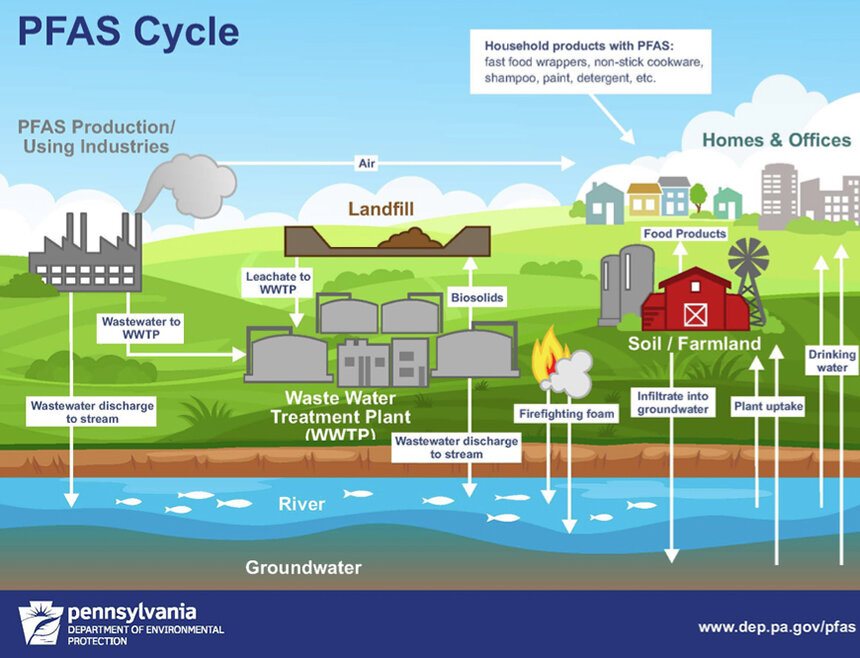Contaminated 6-10 Piles Nearly Gone But Source of Polluted Material Unclear
November 28, 2020
PROVIDENCE — The contaminated piles of fill are nearly gone from a staging area for the 6-10 interchange highway project, but where they came from remains unclear.
As of Nov. 26, a single mound remains from the 2,500 cubic yards of toxic soil stored next to an on-ramp for routes 6 and 10 on Plainfield Street in Olneyville. The material was dumped by Barletta Heavy Division Inc. — the lead developer of the $410 million project — for use as fill in the redevelopment of the 6-10 Connector.
After complaints of dust and suspect debris this summer, the Rhode Island Department of Transportation (RIDOT) ordered Barletta to remove and dispose of the material by Aug. 17.
When Barletta failed to meet the deadline, the soil was retested in September for harmful chemicals by RIDOT and the Rhode Island Department of Environmental Management (DEM). Both agencies issued a new order that the material be removed.
Barletta struggled to find an authorized disposal site. The material was rejected by the Central Landfill in Johnston. DEM denied disposal at the municipal landfill in Tiverton.
In the end, a municipal landfill in Clinton, Mass., agreed to take the contaminated dirt piles. Shipments began Nov. 16 and the last of the material is expected to be removed by Nov. 30. Once Barletta finishes clearing the pile, RIDOT will provide DEM with all shipping and handling logs and weight slips for every vehicle used to transport material from the Plainfield Street site to the Clinton landfill.
RIDOT, which oversees the 6-10 project, won’t say where the soil came from. But it confirmed that some of the contaminated material was used as backfill for road and bridge construction and that that material was removed.
RIDOT has told ecoRI News that Barletta informed the agency that the fill came from an MBTA commuter rail station renovation in East Boston, Mass., where Barletta is leading the construction of the Orient Heights project.
Previously, a smaller amount of contaminated material was brought to the Plainfield Street site from the RIDOT train and bus station project underway in Pawtucket. It was removed in September. RIDOT, however, won’t offer details about the sources of the contaminated fill and deferred questions to the Rhode Island attorney general.
Barletta, based in Canton, Mass., didn’t respond to multiple requests for comment.
The International Union of Operating Engineers Local 57 brought the controversy to light in July after its heavy-equipment operators were exposed to toxic dust from the dirt and Barletta allegedly ignored requests to control the problem.
Tests conducted by RIDOT and DEM concluded that the fill contained two times the acceptable levels of polycyclic aromatic hydrocarbons (PAHs) and four times the acceptable levels of benzo(a)pyrene, both are carcinogens.
The advocacy group Fix the 6/10 Coalition has called on city and state officials to address the public-health and environmental-justice impacts of the contaminated material on the neighborhood. So far, the group of 15 civic organizations has heard from the Rhode Island Department of Health (DOH) about the risks of PAHs, the group of chemicals associated with soot and tar derived from burning wood, coal, gasoline, and diesel.
In a Nov. 10 letter to the group, DOH said levels of PAHs found at this site were typical of soils found in urban areas. “The amount of PAH exposure expected from this contaminated fill is not anticipated to cause health effects, particularly with the implementation of the site’s soil management plan.”
Blake Collins, a spokesperson for the attorney general’s office, told ecoRI News that the office is in regular communication with DEM.
“The matter is of significant continuing concern for this office, and we are closely engaged there, from several angles,” he said.




There would have been criminal charges filed if the contaminated materials had been landed on the Blackstone Blvd. area of Providence. Thank You EcoRI for keeping us informed of this activity.
the situation in Olneyville, and the lack of transparency from RIDOT (to put it mildly) makes me uneasy about RIDOT’s plan to banish most RIPTA bus passengers to a possibly contaminated National Grid site on Dyer St – RIDOT assurances that the site is clean enough need to be independently checked if the Governor goes ahead with that terrible plan.